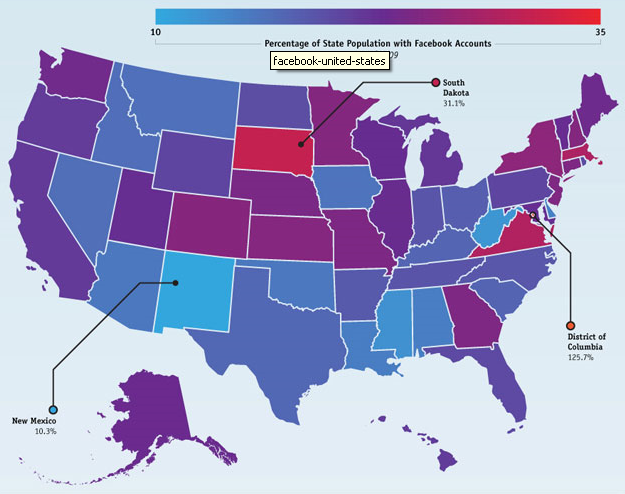 For a while organizations hesitated to jump on the Facebook bandwagon.
For a while organizations hesitated to jump on the Facebook bandwagon.
A couple brave organizations ventured into creating a Facebook Profile, Group or Page to manage its online presence on this social network.
However nowadays everybody and, even your mother, is present on Facebook.
On a daily basis, I receive questions at @idaconcpts, on whether or not a certain organization should have a presence on Facebook. My answer is always the same, it depends.
It depends on:
1) Your objectives.
2) Your target audience.
On this post, we’ll address the second point: your target audience.
Know Your Target Audience
Before even thinking about spending marketing dollars on anything, you need to develop a clear idea of what are the traits and characteristics. At a very basic level, you need to know your audience’s:
- Geographic location
- Age
- Gender
- Race (if applicable)
If you don’t know these basic traits from your target audience, you’re in big trouble.
Yes, the stop-everything-and-fix-this-right-now kind of problem.
Even though you would love that every single person in the world buys your product or service, this is unrealistic. You need to develop a more clear idea of who is buying your product or service. The ultimate goal is to develop a couple of customer profiles, however this is a topic for another post. For now, we will work on the basis that you need to find these 4 basic traits of your target audience.
Let’s analyze each one of these traits, starting with geographic location.
1. Your Target Audience’s Geographic Location

From the map above, it becomes clear that at least 10.3% of the population of any state in the U.S. has a Facebook account. This already should give you an idea of what is the maximum of people that you can reach via Facebook.
From that number, you should be aware that on the average marketing campaigns have a success rate of 1 – 2% (gasp!). Just multiply your target audience’s Facebook presence by 2% and you have created a target number for your Facebook campaign.
For example, Hawaii has a 2008 population estimate of 1,288,198. I don’t have a specific percentage from the graph above, but I am going to be very conservative and will say that 17% of Hawaii’s population is on Facebook.
So, 1,288,198 x 17% x 2% = about 4,300 persons.
Don’t get caught on the exact number, rather on the repercussions of your target number.
However, this is just the beginning.
2. Your Target’s Audience Age

Remember that 4,300 number?
Well, here’s where that number starts getting smaller real fast.
From the bar graph above, we can see that most the Facebook population is in either the 18-25, 26-34, and 35-44. This fact has a lot of repercusions for your business decision whether or not to use Facebook.
If your product is aimed to the 55+ crowd, then Facebook may not be a good channel. However, this might not be true, ONLY if you know your audience correctly. For example, consider the decision of choosing a fun gift for grandma, say a printed photostrip from Wink. Then your target audience is not grandma, but their granddaughters and grandsons on the 18-25, 26-34, and 35-44 age groups.
It’s all about knowing your true target audience.
Its geographic location, its age and it’s gender.
3. Your Target Audiences’ Gender

This is another key trait that you need to know about your audience.
If your whole staff are guys and you’re marketing entirely to women, then you need to put yourself in the shoes of the ladies more! There is no one-size fits all approach.
Knowing the gender of your target audience in advance, will allow you to prepare better on, for example, how to interact with them through Facebook wall post.
Least but not last, let’s discuss about your target audience’s race.
4. Your Target Audience’s Race

If your organization’s target audience has a specific race, such as the Voto Latino initiative for the 2010 U.S. Census, then it is very important to consider race as one of the factors to consider on your decision of whether or not to use Facebook as your marketing channel.
Conclusion: Set a Target and Evaluate
Let’s use the Voto Latino initiative as an example. This is a good example because theoritically speaking this organization would like to reach every single Latino in the United States, so that makes the calculation of a target number much easier. The Voto Latino initiative could have used the data presented here and determined that its target audience on Facebook (all Latinos in the U.S. using Facebook) is about 5 million.
From those 5 million, we would expect a 2% success rate, which means our number would be 100,000. If you take a look at their Facebook Page, as of 04/09/10, it only has 4,284.
Is this a success? Is this a failure?
The answer is that Voto Latino should have a more specific target audience: throw in geographic location into the equation. I don’t have the specific numbers of their Facebook Page fans, but I would focus on the states (cities, even better!) that have responded better to their campaign to refocus their Facebook marketing efforts.

Hey There Damian Davila,
Very interesting, advertisement for facebook
Thanks